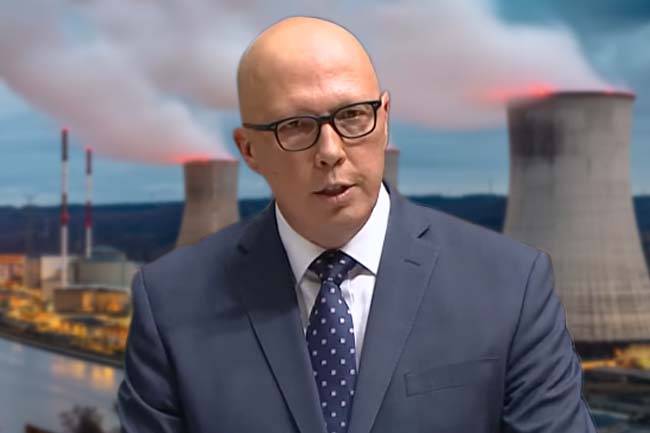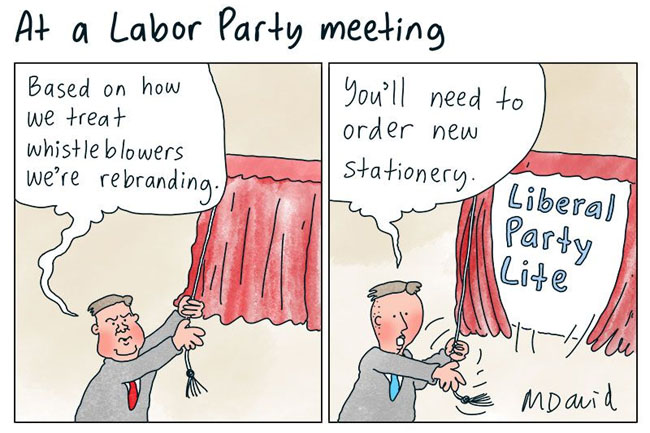A return to a strong post-pandemic economy will require our governments to rethink their political agendas, writes Professor John Quiggin.
FOR A BRIEF MOMENT in March and April during the pandemic, it seemed as if our political class was capable of change.
The Morrison Government discarded years of dishonest rhetoric about Labor’s response to the Global Financial Crisis and embraced almost identical measures on an even larger scale. The National Cabinet seemed to offer the possibility of a co-operative federal system, replacing the ritualised combat of the old COAG (the unlovely acronym for Council of Australian Governments). Labor mostly lived up to the theoretical ideal of the “loyal opposition”, supporting the Government’s response in broad terms while challenging poorly-thought out measures.
Looking to the future, Prime Minister Scott Morrison seemed to signal a new approach to industrial relations, building on the surprisingly successful collaboration between Attorney-General Christian Porter and ACTU President Sally McManus.
A couple of months on, it’s hard to believe it even happened. The Government’s policy announcements have been a mixture of outdated economic thinking and culture war vendettas. The restructuring of university fees, with massive increases for the humanities, combined a narrow and obsolete focus on vocational courses (something that would be better handled by increased funding for TAFE) with silly prejudices about Foucault and queer theory, ventilated by pro-government commentators like Adam Creighton.
The announcement of massive subsidies for the construction sector was combined with the removal of JobKeeper for the childcare industry. The first announcement pandered to the widely-held prejudice that the only “real” jobs are those of workers in hard hats and hi-vis vests, the great majority of whom are men. This idea has the absurd implication that the workers who build schools and hospitals have real jobs, but teachers and nurses do not.
This mix of policies is particularly silly in a situation where female workers have lost more jobs than men and where the cost of creating or preserving jobs is much lower in the hardest-hit sectors than it is in construction, particularly large scale infrastructure. Typical infrastructure projects cost about $1 million per job created and rely heavily on imported equipment.
By contrast, under current circumstances, we can create or preserve jobs in desperately needed human services, including childcare, for little more than the cost of wages (perhaps $100,000 per job, taking account of all on-costs).
Meanwhile, both major parties have been more interested in faction fights, driven almost entirely by personal ambition and greed, than in any serious thinking about the future that awaits us when the current restrictions on economic activity are removed. Labor has been consumed by the results of a falling out between factional allies in Victoria, resulting in a massive dump of taped conversations and leaked texts. These communications are full of foul language and personal vitriol, but show no interest whatsoever in any kind of political goals.
In Queensland, the LNP machine has turned on its parliamentary leader, with no apparent strategy beyond an attempt to reassert power.
Reality will bite soon enough. The JobKeeper scheme is scheduled to end in September. It’s already clear that a sudden “snapback” would be economically disastrous. That point was made by Reserve Bank Governor Philip Lowe back in May.
On the other hand, the scheme can’t continue indefinitely in its current form. It works only for people who held jobs in March and whose employers in that job are willing and able to keep them on. As time goes on, fewer and fewer of the unemployed will meet that requirement.
So, if a disaster is to be avoided, we will need some new and creative thinking from our political leaders soon. At a minimum, we need to maintain the premise underlying JobKeeper, that it is ultimately the responsibility of the national Government to maintain full employment. This responsibility was abandoned by the Howard Government on the assumption that market forces would deliver a return to full employment. Twenty years later, it’s obvious this hasn’t happened and isn’t going to.
Getting back to full employment will require the abandonment of conservative prejudices against the public sector and Labor’s nostalgia for an economy dominated by male workers. That doesn’t look likely at present. But who would have believed in early March that Scott Morrison would soon be implementing the biggest fiscal stimulus in Australian history?
John Quiggin is Professor of Economics at the University of Queensland and the author of Zombie Economics and Economics in Two Lessons.
 This work is licensed under a Creative Commons Attribution-NonCommercial-NoDerivs 3.0 Australia License
This work is licensed under a Creative Commons Attribution-NonCommercial-NoDerivs 3.0 Australia License
Support independent journalism Subscribe to IA.












